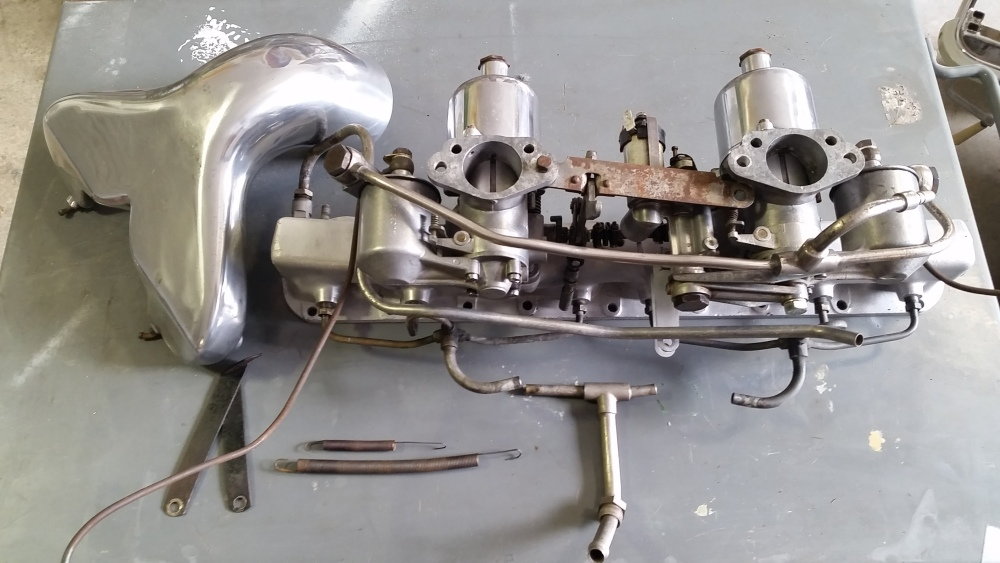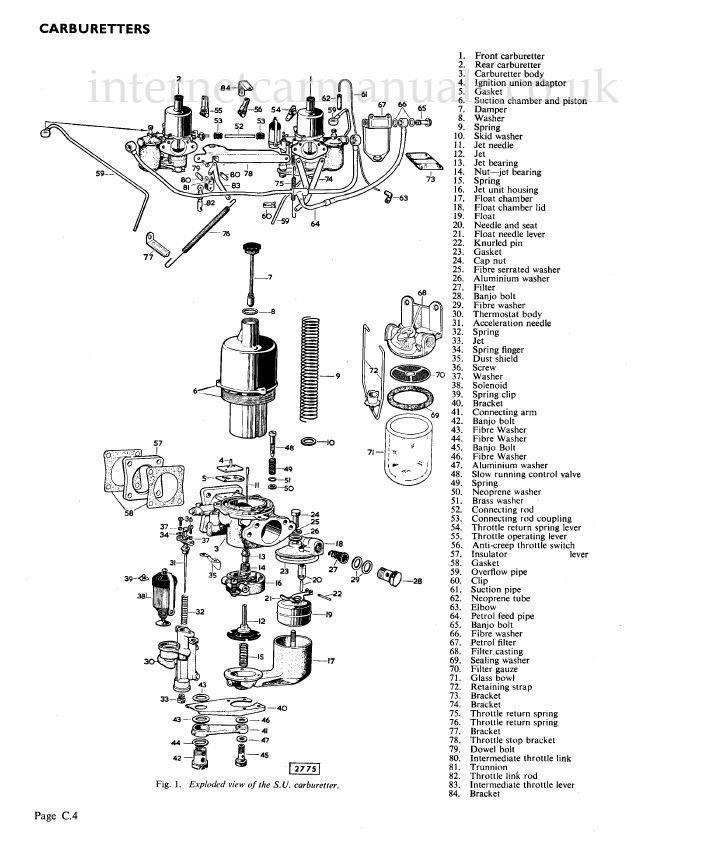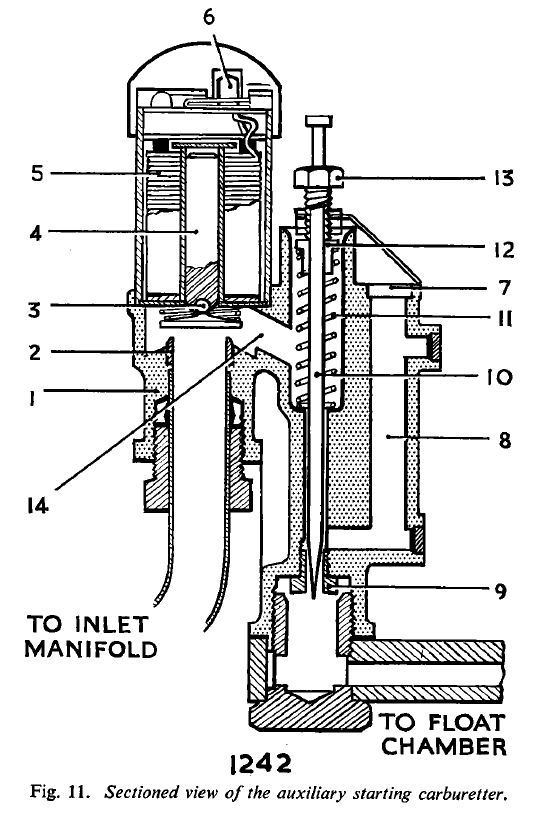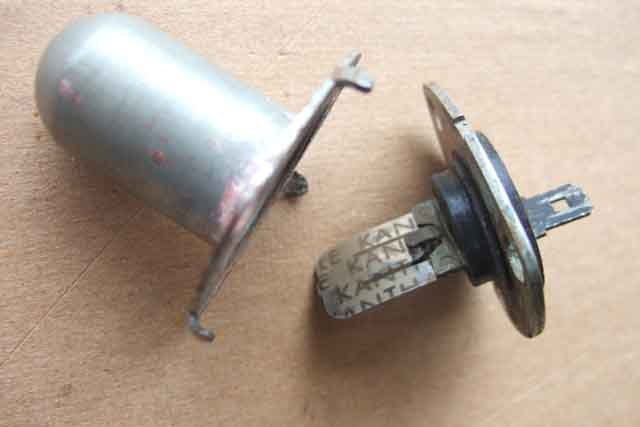Mark 2 Starting Carburettor
#1
My 3.4 must be in fine tune as it always starts on first crank. I do have a question about the starting carb. I have a fellow club member with a 3.8 engine in his car and he had been having problems with his car stalling a few minutes after starting. It seems the starting carb was still dumping gas into the engine flooding it. A fix someone told him was after the engine had ran a few minutes to quickly switch the key off and then back on. This is supposed to shut the starting carb off. Is there any truth to this? I actually haven't ran my engine over 10 minutes or so at a time but was keeping this in mind.
#2
I would doubt switching the ignition off and then back on would affect the starting carbs function because the way it is wired it is either on or off. Ie power goes to it or not but this is down to the otter switch which is the earth for the circuit and the temperature of the engine.
There are many posts on here over the last month talking about fitting over ride switches or bypassing the otter switch so I will not repeat them again.
The AED can be adjusted via the nut on the top of the needle to allow for different ambient air temperature.
The otter switch should be set for 37 degrees ie it cuts off the AED when the water temperature gets to 37 degrees but the otter switch being a bi metal switch is not accurate. It can be adjusted but bending the bi metal strip inside one way or the other to change the temp it switches off allowing the AED to stay on for longer or switches it off sooner. I find having an override switch which allows me to turn the AED on or off when I want works in both hot and cold weather.
There are many posts on here over the last month talking about fitting over ride switches or bypassing the otter switch so I will not repeat them again.
The AED can be adjusted via the nut on the top of the needle to allow for different ambient air temperature.
The otter switch should be set for 37 degrees ie it cuts off the AED when the water temperature gets to 37 degrees but the otter switch being a bi metal switch is not accurate. It can be adjusted but bending the bi metal strip inside one way or the other to change the temp it switches off allowing the AED to stay on for longer or switches it off sooner. I find having an override switch which allows me to turn the AED on or off when I want works in both hot and cold weather.
The following users liked this post:
Glyn M Ruck (09-10-2022)
#3
My 3.4 must be in fine tune as it always starts on first crank. I do have a question about the starting carb. I have a fellow club member with a 3.8 engine in his car and he had been having problems with his car stalling a few minutes after starting. It seems the starting carb was still dumping gas into the engine flooding it. A fix someone told him was after the engine had ran a few minutes to quickly switch the key off and then back on. This is supposed to shut the starting carb off. Is there any truth to this? I actually haven't ran my engine over 10 minutes or so at a time but was keeping this in mind.
On my S-Type I had a few years back I fitted an overide switch which has three positions, on, off and auto. I think I used an old headlight switch and simply wired it so that the cable to the otter switch went to the three position switch, in on it earthed it directly at the switch, in off it didn't have a connection and in auto I took a wire from the switch back to the otter switch.
The following users liked this post:
Glyn M Ruck (09-10-2022)
#4
Join Date: Nov 2012
Location: Joyner, Queensland, Australia
Posts: 959
Received 1,067 Likes
on
625 Posts
Oxendine
I sounds like your friend might have a "dicky" thermocarb controller called an Otter switch which is at the front end of the inlet manifold.
A simple diagnosis is after starting the car and letting it warm up disconnect the wire from the otter switch. it is a push on spade connector, and you won't get an electric shock from 12 volts.
If the car then runs OK it has a crook otter switch.
The fixes are a new otter switch at about 60 English pounds.
Alternatively modify the car to have a manual control switch on which there is plenty of information in this forum.
I sounds like your friend might have a "dicky" thermocarb controller called an Otter switch which is at the front end of the inlet manifold.
A simple diagnosis is after starting the car and letting it warm up disconnect the wire from the otter switch. it is a push on spade connector, and you won't get an electric shock from 12 volts.
If the car then runs OK it has a crook otter switch.
The fixes are a new otter switch at about 60 English pounds.
Alternatively modify the car to have a manual control switch on which there is plenty of information in this forum.
The following users liked this post:
Glyn M Ruck (09-10-2022)
#5
Join Date: Nov 2012
Location: Joyner, Queensland, Australia
Posts: 959
Received 1,067 Likes
on
625 Posts
The following users liked this post:
Glyn M Ruck (09-10-2022)
#6
Join Date: Jul 2012
Location: Llandudno, Cape Town, South Africa
Posts: 5,484
Received 1,469 Likes
on
1,140 Posts
#7
Trending Topics
#9
Join Date: Jul 2012
Location: Llandudno, Cape Town, South Africa
Posts: 5,484
Received 1,469 Likes
on
1,140 Posts
Absolutely Jeff. Thanks for the correct & useful enhancement to my comment. More minds = better outcomes.
Last edited by Glyn M Ruck; 09-11-2022 at 05:47 AM.
#10
The space 8 is air. The device provides extra air and extra gasoline. The total and the ratio depends on the manifold depression. The air and fuel mix just above the bottom of the pointed end of the needle. Adjusting the nut at the top of the needle controls the maximum gasoline flow. Manifold vacuum acts against the solenoid, tending to close the valve (2 and 3) and shut off flow of air and fuel through the device. That's why a dab on the throttle can help the hisser to get started.
All the above is how I understand things - feel free to tell me I'm wrong. I used to adjust the hisser when the engine was fully warmed up. Short the otter. Dab the throttle. Then richen the mixture from the hisser until the engine starts to cough. Finally, wind back a touch. If the hisser doesn't allow the engine to start or run when it's very cold, richen a little.
All the above is how I understand things - feel free to tell me I'm wrong. I used to adjust the hisser when the engine was fully warmed up. Short the otter. Dab the throttle. Then richen the mixture from the hisser until the engine starts to cough. Finally, wind back a touch. If the hisser doesn't allow the engine to start or run when it's very cold, richen a little.
#11
Join Date: Jul 2012
Location: Llandudno, Cape Town, South Africa
Posts: 5,484
Received 1,469 Likes
on
1,140 Posts
Fuel feed from the front carb to the AED ~ note in diagram above.





I think that should cover. Shout if you have further questions.
Last edited by Glyn M Ruck; 09-11-2022 at 07:34 AM.
#12
Join Date: Jul 2012
Location: Llandudno, Cape Town, South Africa
Posts: 5,484
Received 1,469 Likes
on
1,140 Posts
The space 8 is air. The device provides extra air and extra gasoline. The total and the ratio depends on the manifold depression. The air and fuel mix just above the bottom of the pointed end of the needle. Adjusting the nut at the top of the needle controls the maximum gasoline flow. Manifold vacuum acts against the solenoid, tending to close the valve (2 and 3) and shut off flow of air and fuel through the device. That's why a dab on the throttle can help the hisser to get started.
All the above is how I understand things - feel free to tell me I'm wrong. I used to adjust the hisser when the engine was fully warmed up. Short the otter. Dab the throttle. Then richen the mixture from the hisser until the engine starts to cough. Finally, wind back a touch. If the hisser doesn't allow the engine to start or run when it's very cold, richen a little.
All the above is how I understand things - feel free to tell me I'm wrong. I used to adjust the hisser when the engine was fully warmed up. Short the otter. Dab the throttle. Then richen the mixture from the hisser until the engine starts to cough. Finally, wind back a touch. If the hisser doesn't allow the engine to start or run when it's very cold, richen a little.
Last edited by Glyn M Ruck; 09-11-2022 at 10:32 AM.
#13
Join Date: Nov 2012
Location: Joyner, Queensland, Australia
Posts: 959
Received 1,067 Likes
on
625 Posts
Peter is correct.
Just to be different I have always adjusted the "hisser" mixture when cold to a slightly over rich setting
i am using it as a "choke" that is an enrichment device for starting but not for running for long periods as would be required in very cold climates.
Like Glyn I am in a temperate climate and seldom get colder than 5 C or 40 F in winter.
By the way the electric system for the "hisser" should normally be activated either by the otter switch or manual switch prior to any attempt to start the engine.
Rotating the engine without prior activation will end up with the solenoid plate valve stuck down with intake vacuum.
This can be alleviated by opening the throttle releasing intake manifold vacuum and allowing the valve to lift which leads people to think pushing on the throttle pumps fuel in as per an accelerator pump
Just to be different I have always adjusted the "hisser" mixture when cold to a slightly over rich setting
i am using it as a "choke" that is an enrichment device for starting but not for running for long periods as would be required in very cold climates.
Like Glyn I am in a temperate climate and seldom get colder than 5 C or 40 F in winter.
By the way the electric system for the "hisser" should normally be activated either by the otter switch or manual switch prior to any attempt to start the engine.
Rotating the engine without prior activation will end up with the solenoid plate valve stuck down with intake vacuum.
This can be alleviated by opening the throttle releasing intake manifold vacuum and allowing the valve to lift which leads people to think pushing on the throttle pumps fuel in as per an accelerator pump
The following users liked this post:
Glyn M Ruck (09-11-2022)
#14
i'm more interested in how the thing works than how to adjust it. i figure adjusting it will make more sense when i know how it works.
so, if section "8" and the gasoline from the parent carb's floatbowl meet at the tip of the needle, why doesn't section "8" fill with gasoline to the level of the gasoline in the parent carb's floatbowl? because it is my understanding that section "8" is vented to the atmosphere.
so, if section "8" and the gasoline from the parent carb's floatbowl meet at the tip of the needle, why doesn't section "8" fill with gasoline to the level of the gasoline in the parent carb's floatbowl? because it is my understanding that section "8" is vented to the atmosphere.
#15
It may look archaic, but, at least to an old engineer like me, it's quite a clever design. It gives extra mixture, on the rich side, at idle, richens the mixture a bit more at part load for good throttle response, contributes little at high load (where it's not needed and you shouldn't be taking a cold engine), and closes completely on the over run to save fuel (and keep the engine internals clean). What more can you ask for? What more can you achieve without digital electronics?
How you tune it is a matter of what suits your climate and works. I found that the engine always started and ran OK when cold. I wanted to avoid it missing as the engine warmed up and approached the switch off temperature. In my drive to work in the morning, the engine was about reaching that point when I had to enter a busy road with fast moving traffic.
How you tune it is a matter of what suits your climate and works. I found that the engine always started and ran OK when cold. I wanted to avoid it missing as the engine warmed up and approached the switch off temperature. In my drive to work in the morning, the engine was about reaching that point when I had to enter a busy road with fast moving traffic.
#16
Join Date: Jul 2012
Location: Llandudno, Cape Town, South Africa
Posts: 5,484
Received 1,469 Likes
on
1,140 Posts
[QUOTE=hueyhoolihan;2565129
so, if section "8" and the gasoline from the parent carb's floatbowl meet at the tip of the needle, why doesn't section "8" fill with gasoline to the level of the gasoline in the parent carb's floatbowl? because it is my understanding that section "8" is vented to the atmosphere.[/QUOTE]
As far as I know Section 8 does adopt parent carb float bowl level with gasoline awaiting the solenoid to rise triggered by the Otter switch. I will diligently read my SU Bible tonight but I'm pretty sure I'm right as are you Huey. 8 is open to ambient air intake. Hence "hisser" Plus opening to manifold for greater noise.
so, if section "8" and the gasoline from the parent carb's floatbowl meet at the tip of the needle, why doesn't section "8" fill with gasoline to the level of the gasoline in the parent carb's floatbowl? because it is my understanding that section "8" is vented to the atmosphere.[/QUOTE]
As far as I know Section 8 does adopt parent carb float bowl level with gasoline awaiting the solenoid to rise triggered by the Otter switch. I will diligently read my SU Bible tonight but I'm pretty sure I'm right as are you Huey. 8 is open to ambient air intake. Hence "hisser" Plus opening to manifold for greater noise.
Last edited by Glyn M Ruck; 09-11-2022 at 06:00 PM.
#17
Space 8 should fill to the level of the float chamber when the engine isn't running. I think that level should be around the bottom of space 8, but it's difficult to see from the drawings or on the car. As my car has been emptied of gasoline for a long time, I can't do a dipstick check. Of course, when there's suction on the hisser, 8 will empty of fuel.
I had a look at my workshop manual and it doesn't mention manifold vacuum pulling down on the solenoid and throttling the hisser, however I'm sure I've seen it in an old SU book and described as part of the operation.
I had a look at my workshop manual and it doesn't mention manifold vacuum pulling down on the solenoid and throttling the hisser, however I'm sure I've seen it in an old SU book and described as part of the operation.
#18
Join Date: Jul 2012
Location: Llandudno, Cape Town, South Africa
Posts: 5,484
Received 1,469 Likes
on
1,140 Posts
I think it's higher up space 8 but I shall endeavour to measure on my spare pair of carbs & manifold depending what is piled on top of them. I've installed shelving in my garage to get everything off the floor & increase my space for the cars, Now I can't find everything. Found my weird size precious Gedore SU float bowl socket the other day. We are a metric country & I've put together a mainly Kennedy set of tools & wrenches for the Jag. They are beautifully made. I used to be a Hazet man. Kennedy make all these non metric sizes available here otherwise it's all metric. Being a Benz man everything is Torx or Reverse Torx
Last edited by Glyn M Ruck; 09-11-2022 at 12:31 PM.
#19
The following video deals with the later more automatic/self-contained version of the AED, but the principles are the same:
Jaguar XJ6 AED Explained - Bing video
Jaguar XJ6 AED Explained - Bing video
The following 2 users liked this post by S-Type Owner:
Glyn M Ruck (09-11-2022),
Sir_daniel (11-10-2022)
#20
Join Date: Jul 2012
Location: Llandudno, Cape Town, South Africa
Posts: 5,484
Received 1,469 Likes
on
1,140 Posts





